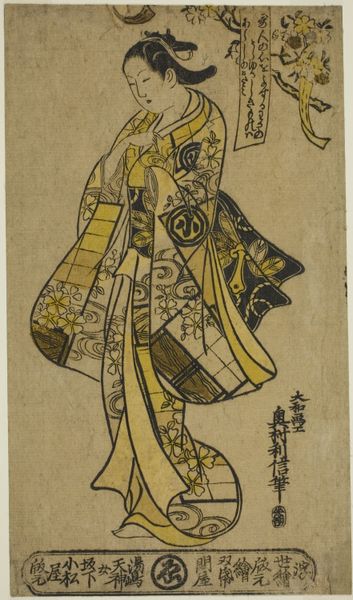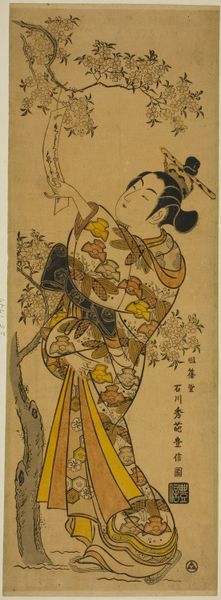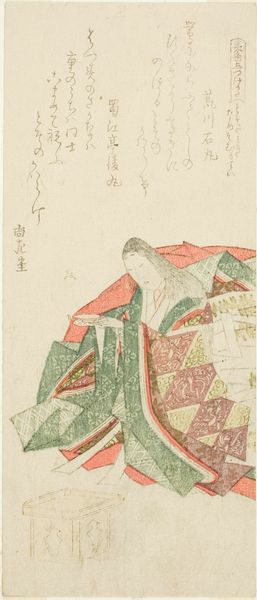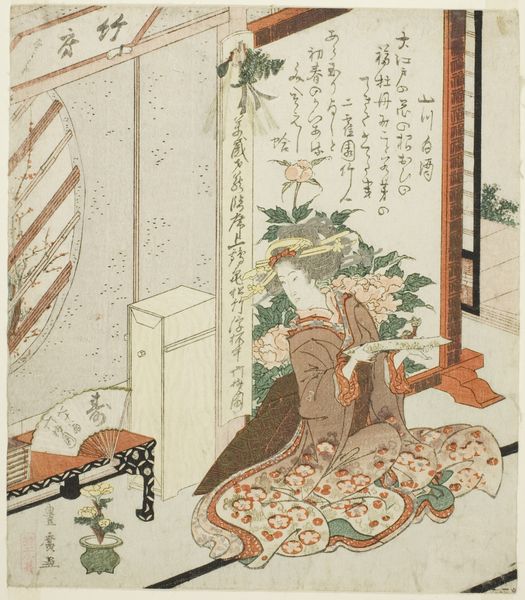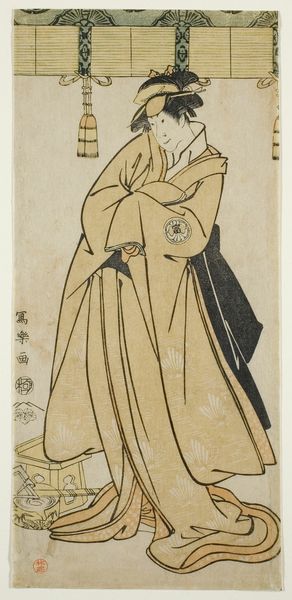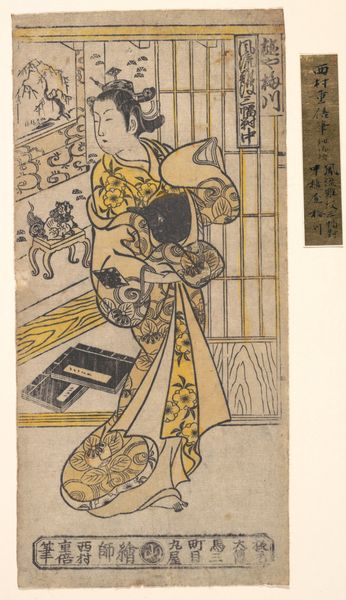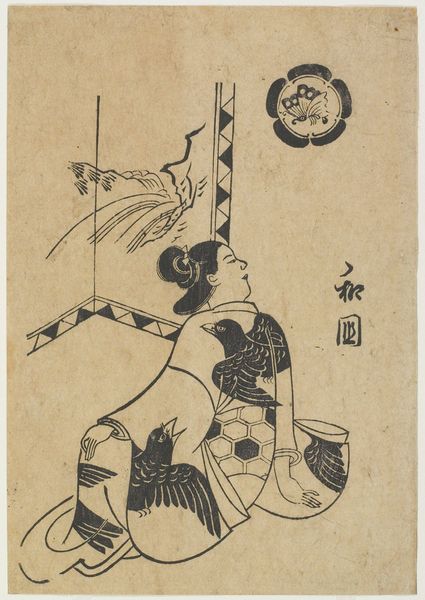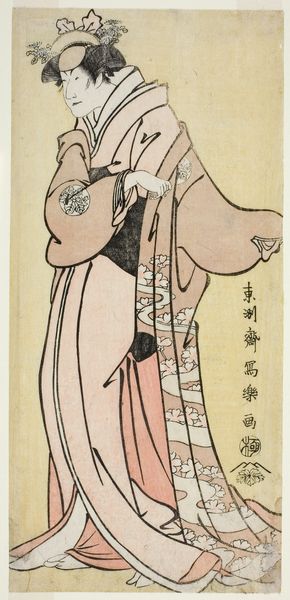
Woman Writing a Letter in Front of a Screen c. early 1740s
0:00
0:00
drawing, print, ink
#
portrait
#
drawing
#
ink drawing
#
ink painting
# print
#
asian-art
#
ukiyo-e
#
figuration
#
ink
Dimensions: 65.1 × 16.3 cm (27 × 6 1/2 in.)
Copyright: Public Domain
Editor: Ishikawa Toyonobu's "Woman Writing a Letter in Front of a Screen," dating from the early 1740s, strikes me as incredibly intimate. The use of line is just beautiful, delicate, and refined. What visual cues or historical context jump out to you when you look at this work? Curator: It's compelling, isn't it? For me, the screen behind the woman serves as a powerful symbol. Consider the cultural memory embedded within screens: traditionally they separate interior and exterior spaces but simultaneously create depth and mystery, projecting shadows that blur the lines between the real and imagined. The woman's act of writing—communicating to someone removed from her—mirrors this dynamic, and evokes thoughts of intimacy, absence, or the cultural conventions shaping her message. Do you sense any other tension between private and public life within the image? Editor: Yes, that resonates strongly! Perhaps the very act of writing the letter in such fine garments and poised, hints at how performative it would have been, bound by social etiquette. What could those abstract forms represent in the Japanese psyche? Curator: Ukiyo-e prints often include symbols layered with cultural meaning. We see that screens, in particular, might represent both restriction and escape. That tension is potent in shaping not only Japanese but collective culture, informing notions of freedom and entrapment within specific social conditions. What new layers does this symbolism add to your perception of the woman's experience? Editor: It highlights the complexity of her situation. She is not just writing a letter; she's navigating a whole world of social expectations and emotional constraints. Thanks for clarifying the powerful connection that symbols have to our own identities. Curator: Precisely! Recognizing and interpreting these symbolic traces help reveal layers of continuity and cultural transformation, spanning from the early 1740's to present-day audiences.
Comments
No comments
Be the first to comment and join the conversation on the ultimate creative platform.
